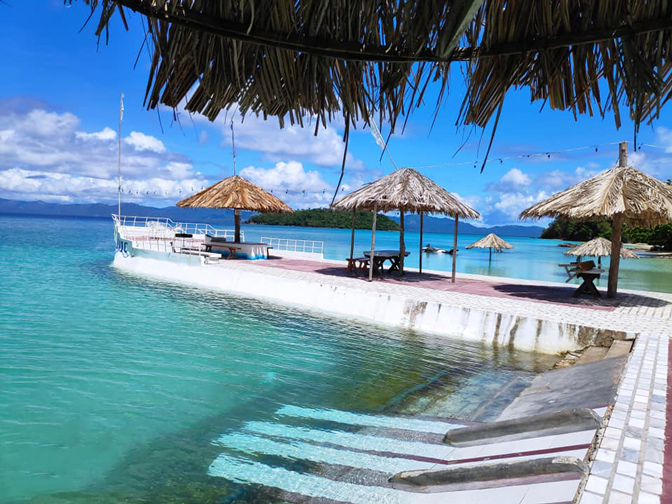Nestled in the heart of the Philippines, Romblon is a province known for its pristine beaches, marble quarries, and rich cultural heritage. Yet, beyond its postcard-worthy landscapes lies a hidden story—one of the last mangrove tribes, whose way of life is slowly fading into obscurity. These indigenous communities, deeply intertwined with the mangrove ecosystems, have thrived for generations along Romblon’s coastal fringes. However, modernization, environmental changes, and economic pressures are threatening their existence. In this article, we’ll explore the unique traditions, challenges, and resilience of the mangrove tribes of Romblon, shedding light on a vanishing way of life that deserves to be remembered.
The Mangrove Tribes: Guardians of Romblon’s Coastal Ecosystems
The mangrove tribes of Romblon are small, indigenous groups that have lived in harmony with the region’s mangrove forests for centuries. Unlike urban settlers, these communities rely on the mangroves not just for shelter but for sustenance, crafting a lifestyle that’s both sustainable and deeply rooted in nature. The mangroves—those tangled, salt-tolerant trees that thrive where land meets sea—provide a natural barrier against storms, a breeding ground for fish, and materials for tools and homes.
For these tribes, the mangroves are more than a resource; they’re a lifeline. Elders pass down knowledge of tides, fish migration patterns, and plant uses, ensuring that each generation understands the delicate balance of their environment. This symbiosis has allowed them to survive in an area where others might struggle, making them true stewards of Romblon’s coastal ecosystems.
Daily Life Among the Mangroves
Imagine waking up to the sound of waves lapping against wooden stilts, the air thick with the scent of saltwater and earth. For the mangrove tribes, daily life revolves around the rhythms of the sea. Here’s a glimpse into their world:
- Fishing: Using handmade nets and traps, they harvest fish and crustaceans from the mangrove channels.
- Gathering: Women and children collect shellfish, edible plants, and firewood from the forest edges.
- Craftsmanship: Men weave baskets and carve tools from mangrove wood, skills honed over generations.
These activities aren’t just chores—they’re a celebration of a lifestyle that’s sustained them through time. Yet, this way of life is under threat, as external forces encroach on their once-isolated world.
Why the Mangrove Tribes Are Disappearing
The decline of Romblon’s mangrove tribes is a complex story, woven from environmental, economic, and social threads. As the world modernizes, these communities find themselves caught between tradition and transformation. Below, we unpack the key factors driving their vanishing way of life.
Environmental Degradation
Mangrove forests are disappearing at an alarming rate across the Philippines, and Romblon is no exception. Coastal development, illegal logging, and climate change have shrunk these vital ecosystems. Rising sea levels and stronger typhoons erode the shorelines, while pollution from nearby towns poisons the waters the tribes depend on. Without healthy mangroves, their food sources dwindle, forcing many to seek alternatives elsewhere.
Economic Pressures
Modernization has brought new opportunities to Romblon—tourism, mining, and commercial fishing—but these often come at the expense of indigenous ways. Younger generations are lured by the promise of steady wages in towns or cities, leaving behind the labor-intensive life of the mangroves. As one elder lamented, “The young ones want phones and concrete houses, not fish and wooden boats.” This shift is steadily emptying tribal villages.
Cultural Erosion
With each generation that drifts away, the traditions of the mangrove tribes fade. Oral histories, songs, and ecological knowledge—once passed down through storytelling—risk being lost forever. Schools teach in Tagalog or English, sidelining native dialects, while television and social media drown out the old ways. The result is a slow cultural unraveling, as the tribes’ identity becomes a faint echo of what it once was.
Preserving a Vanishing Legacy
Despite these challenges, there’s hope for the mangrove tribes of Romblon. Efforts to preserve their way of life are emerging, driven by local advocates, environmentalists, and even the tribes themselves. Here’s how this legacy might endure:
- Conservation Projects: Initiatives like the Talipasak Mangrove Eco-Park aim to protect and restore mangrove habitats, ensuring the tribes have a foundation to build on.
- Eco-Tourism: Sustainable tourism offers a way to share their culture with the world, providing income without sacrificing traditions.
- Education: Programs that blend modern learning with indigenous knowledge could inspire younger members to stay connected to their roots.
These efforts require collaboration—between governments, NGOs, and the tribes themselves—to succeed. The stakes are high: losing the mangrove tribes means losing a piece of Romblon’s soul.
What Visitors Can Learn from the Mangrove Tribes
For travelers seeking more than just beaches, the mangrove tribes offer a profound lesson in resilience and harmony. Visiting their communities—where permitted—reveals a simplicity that’s both humbling and inspiring. You might paddle through mangrove channels in a wooden boat, taste a meal of freshly caught fish, or hear a story of survival from an elder. These experiences remind us that progress doesn’t have to mean destruction—it can mean balance.
Romblon’s tourism scene is growing, with spots like Bonbon Beach and Mount Guiting-Guiting drawing adventurers. Yet, the mangrove tribes provide a quieter, more introspective journey—one that connects you to the land and its people in a way few destinations can.
The Future of Romblon’s Mangrove Tribes
As we stand in 2025, the fate of the mangrove tribes hangs in the balance. Will they adapt to a changing world, or will their way of life slip away like sand through fingers? The answer lies in our collective hands. By raising awareness, supporting conservation, and valuing their culture, we can help ensure that the last mangrove tribes of Romblon don’t become a footnote in history.
Their story is a call to action—a reminder that some ways of life are worth fighting for. So, the next time you think of Romblon, look beyond the marble and the beaches. Seek out the mangroves, and listen to the whispers of a vanishing world.


